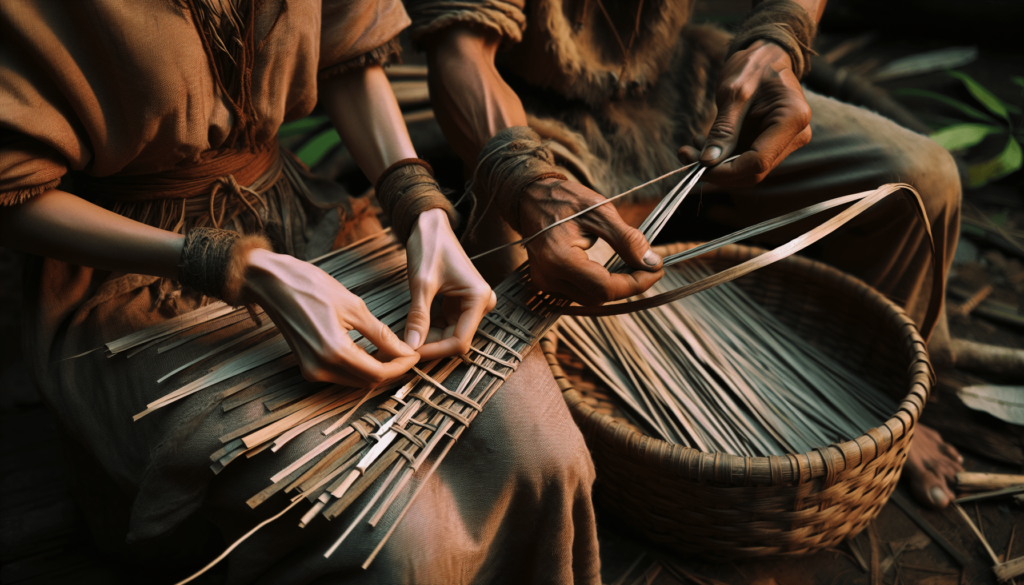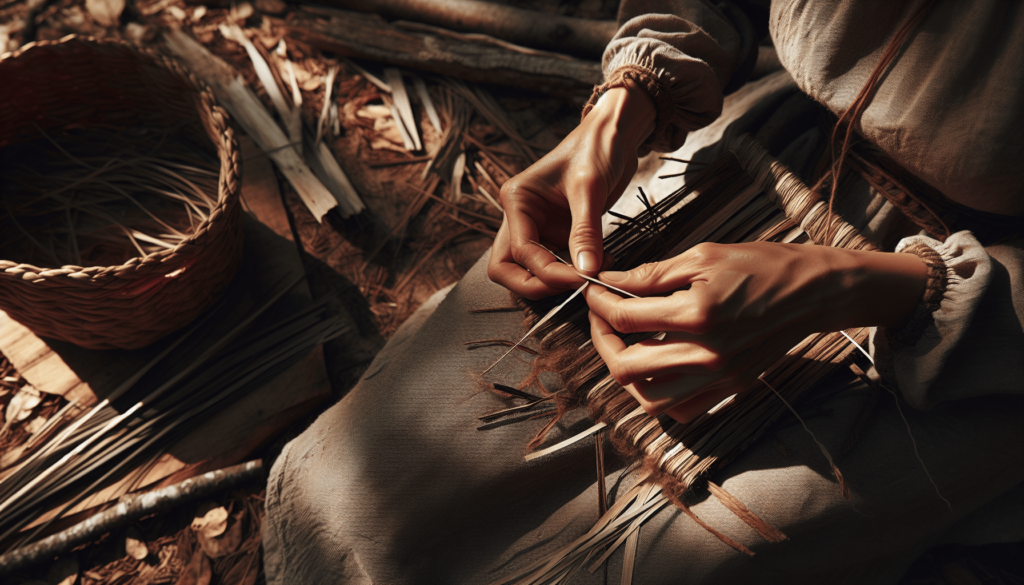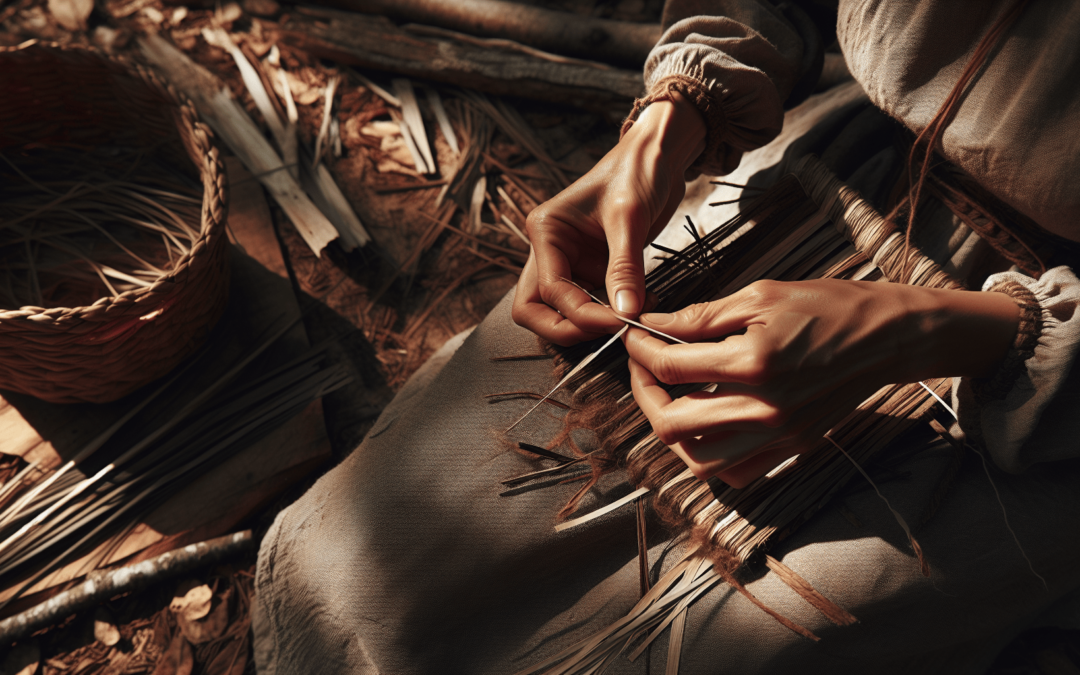Discover the age-old art of weaving with “Primitive Weaving Techniques For Bushcraft.” In this engaging read, you’ll dive into practical methods that have been used for centuries to craft essential outdoor gear like baskets, mats, and fish traps using nothing but natural materials found in the wild. These timeless skills not only connect you to ancient traditions but also enhance your self-reliance and resourcefulness in the great outdoors. Get ready to enrich your bushcraft toolkit with these invaluable techniques! Have you ever found yourself deep in the wilderness, marveling at its raw beauty, and wondering how people once lived off the land, crafting their necessities by hand? Primitive weaving is one of those age-old skills that can both enhance your bushcraft experience and connect you with our ancestors’ resourcefulness. By learning these techniques, you’ll not only improve your survival skills but also gain a deeper appreciation for the art of living harmoniously with nature.

Introduction to Primitive Weaving
Primitive weaving techniques date back thousands of years. Ancient civilizations relied on their surroundings to create tools, shelter, and clothing. Weaving was an essential skill that allowed them to craft items from natural materials. In a bushcraft setting, knowing how to weave can help you make baskets, mats, and even functional clothing using materials you find in the wild.
Why Learn Primitive Weaving?
In a modern world where convenience often takes the front seat, it may seem odd to learn such an ‘outdated’ skill. However, primitive weaving offers a range of practical benefits:
- Self-Sufficiency: Knowing how to produce your necessities makes you less reliant on modern conveniences.
- Survival Skills: In a survival situation, the ability to make shelter, traps, or even clothing can be invaluable.
- Mindfulness and Creativity: Weaving encourages a sense of mindfulness and can be a calm, meditative activity.
Materials You’ll Need
Your first task is gathering suitable materials from your environment. Different plants have various uses, so it’s essential to know what to look for and when to harvest.
| Material | Source | Uses |
|---|---|---|
| Grass | Meadows, fields | Mats, baskets |
| Reeds | Wetlands, near water | Baskets, mats |
| Vines (e.g., Ivy) | Forests, around trees | Rope, fastenings |
| Bark | Trees (e.g., Birch, Elm) | Baskets, containers |
| Willow | Riverbanks, streams | Baskets, frames |
Tools You’ll Need
While many tools can be fashioned from materials on hand, starting with a few basic items can help ease the process:
- Knife: Essential for cutting and shaping materials.
- Awl: Useful for making holes in tougher materials like bark.
- Hedge Shears or Clippers: Helps in cutting thick vines or branches.
- Twine/String: Temporary until you can create natural replacements.
Basic Weaving Techniques
Primitive weaving methods can range from simple to complex. Here, we’ll cover some foundational techniques suitable for beginners.
Twining
Twining is one of the most straightforward techniques and is ideal for making robust and flexible items. It involves twisting two flexible pieces of material around a vertical framework.
-
Prepare Materials: Cut two types of materials: sturdy pieces for the warp (vertical lines) and flexible pieces for the weft (horizontal lines).
-
Create Framework: Lay out your warp pieces evenly spaced. These will form the backbone of your item.
-
Start Twining: Twist your weft materials alternately over and under each warp strand. Continue twining back and forth, tightening each row as you go.
-
Finish Off: Secure the ends by weaving them back into the last few rows or tying them off.
Plaiting
Plaiting, or braiding, is slightly more intricate but excellent for creating stronger structures like mats and ropes.
-
Organize Strands: Gather an even number of flexible materials.
-
Divide and Overlap: Divide your strands into three smaller groups. Start by crossing the right group over the middle one, then the left over the new middle strand.
-
Repetition: Continue overlapping the strands in this manner. Ensure each new overlap is tightly pressed against the last to form a firm braid.
-
Secure Ends: Knot or tuck in the ends to finish.
Coil Basket Weaving
This method is perfect for creating baskets of various sizes and shapes.
-
Base Creation: Start by forming a small loop with your chosen material. Secure it by tying a knot.
-
Coiling: Wind your material around the loop. Use a needle or sharp object to poke through the previous coil, binding each new layer.
-
Building Walls: Once your base is the desired size, start coiling upwards to form the walls of the basket.
-
Finishing Touches: After reaching the needed height, taper off the material to finish smoothly or tuck the end into the previous coils.
Advanced Weaving Techniques
Once you’ve mastered the basics, you can explore more complex techniques that allow for greater creativity and functionality.
Checkerboard Weave
Ideal for making stronger, decorative pieces.
-
Prepare Materials: Cut warp and weft materials of the same length.
-
Laying Out Warp: Position your vertical materials evenly. Attach them to a sturdy frame or hold in place with weights.
-
Weaving Weft: Weave your first piece of weft over and under the warp materials. For the second weft piece, alternate the over-under pattern.
-
Rows Continuation: Keep adding rows, alternating the pattern.
Twill Weave
This technique offers a diagonal pattern, providing more flexibility and durability.
-
Warp Setup: Similar to the checkerboard weave, set your warp materials.
-
Pattern Start: Weave your first weft over one warp, under two, repeating this pattern.
-
Next Rows: For subsequent rows, offset the pattern by starting one warp strand later each time.
-
Finishing: Secure as with previous techniques.
Loop and Twist
Ideal for creating durable mats or clothing pieces.
-
Material Selection: Use longer, flexible materials such as vines or longer grass.
-
Loop Formation: Create small loops with the first few strands.
-
Twist and Secure: Twist additional materials through these loops, pulling tight.
-
Repetition: Continue looping and twisting, ensuring each new loop is tightly secured to its predecessors.
Crafting Useful Items
Now that you’re familiar with basic and advanced techniques, let’s apply them to make some practical items for bushcraft.
Making a Basket
-
Materials: Gather reeds or split tree bark.
-
Base Creation: Using the coil basket weaving technique, start your base.
-
Building Walls: Use twining or coil weaving to create the walls of the basket.
-
Handles: For larger baskets, weave handles by braiding strong, thick strands and securing them to the basket’s top edges.
Crafting a Mat
-
Materials: Collect long grasses or reeds.
-
Simple Plaiting: Use the plaiting technique. Make several long braids.
-
Weaving Together: Lay out the braids side by side, weaving another set of braids horizontally to bind them.
-
Edge Binding: Secure the outer edges by wrapping and knotting flexible vines around them.
Making Rope
-
Materials: Collect long vines or grass.
-
Plaiting Technique: Use the basic plaiting technique, but ensure to keep the braid tightly coiled.
-
Strength Testing: Once finished, test the rope’s strength by pulling it firmly. Adjust as needed.
-
Multiple Lengths: For stronger rope, plait several lengths together using the same method.

Maintenance and Preservation
Primitive items, while strong, need maintenance to ensure longevity.
Inspect Regularly
Check your woven items regularly for wear and tear. Addressing minor issues early prevents them from becoming major problems.
Clean Appropriately
- Removing Debris: Use a soft brush to remove dirt and debris.
- Washing: If necessary, gently wash with water and let air dry.
Storing Properly
Store items in a dry, shaded area. Avoid places with extreme temperature changes, which can degrade natural materials.
Ethical Considerations
While practicing primitive weaving, it’s important to remain eco-conscious.
Sustainable Harvesting
- Take Only What You Need: Avoid overharvesting to ensure plant populations remain healthy.
- Seasonal Awareness: Collect materials in their appropriate seasons to minimize harm.
Respect for Nature
Always be mindful of the impact your activities have on the ecosystem. Leave no trace and respect wildlife habitats.
Conclusion
Primitive weaving techniques open up a world of possibilities in bushcraft, merging utility with creativity. By learning these skills, you’ll not only enhance your self-sufficiency but also forge a deeper connection with the natural world. So the next time you venture into the wilderness, give primitive weaving a try and experience the remarkable satisfaction that comes from crafting with your own hands. Happy weaving!

